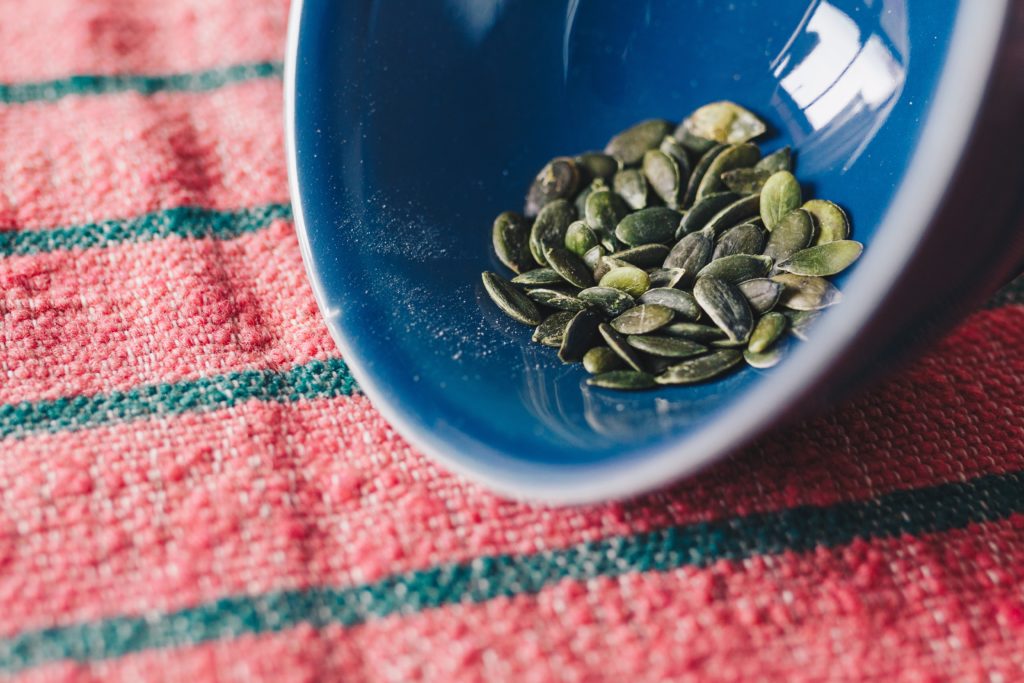What to do with pumpkin seeds

Scooping out the cold, slimy guts of a jack-o’-lantern is one of those odd tasks that can be both satisfying and unpleasant at the same time. And since the ultimate goal is to hollow out the pumpkin for carving, the pumpkin seeds and pulp are often seen as nothing more than a mess to be cleaned up and dumped in the compost pile.
Not so fast. There’s plenty you can do with pumpkin seeds. Here are just a few ideas on what to do with pumpkin seeds:
- Roast, toast or fry them up. Once cooked, pumpkin seeds make for an excellent snack, and they’re a good source of protein, calcium, iron, magnesium, potassium
and zinc, according to the USDA. You can cook the seeds with butter and salt for alittle added flavor and crispiness, and several online recipes add a variety of spices to this mix, some savory and some sweet.
- Make pumpkin seed tea. A traditional remedy for many ailments, including stomach issues, menopausal symptoms, parasites
and more, pumpkin seeds are often ground up (with a food processor) and made into tea, usually mixed with complementing ingredients, such as ginger and cinnamon. In fact, an old story about pumpkin seed tea being used in the Bangor area to treat a boy with parasites is available through the Maine Folklife Center, recorded in 1967. The storyteller, Elsie Diamond Smith, was born in New Brunswick around 1900 and had extensive knowledge about herbal remedies.
- Have fun with pumpkin seed art. Being fairly flat and easy to color, pumpkin seeds are great for creating mosaics. They can be colored with paint or markers, then arranged on paper or another medium with wood glue or hot glue. A variety of these creations can be found online, including painted trees for which the seeds have been used as leaves.
- Wear the seeds. Pumpkin seed bracelets and necklaces are easy to make by stringing them together with a needle and thread. And to jazz it up, you can dye the seeds by placing them in a jar with food coloring and water overnight. You can also add dried corn to the ensemble, as seen on the blog gingerbreadsnowflakes.com.
- Create granola with your pumpkin seeds and a few other wholesome nuts, seeds and spices. A popular, grain-free recipe for Pumpkin Seed Granola can be found at Detoxinista. In the recipe, pumpkin seeds, sunflower seeds
and chia seeds are broken down in a food processor so that they still have a chunky texture but are thoroughly mixed and easy to eat. Other granola recipes include oats, almonds, dried cranberries and plenty of honey or maple syrup.
- Save your seeds. If you especially liked the pumpkin that the seeds came from, why not save the seeds so you can grow a similar pumpkin next year? Saving seeds is fairly simple, but the process differs depending on the type of plant. For pumpkin seeds, the University of Maine Cooperative Extension suggests adding the seeds to water and keeping the container at room temperature, allowing the mixture to ferment for several days, stirring daily to separate the seeds from the pulp. After a few days, collect the seeds that have sunk to the bottom of the container (the ones floating on the top aren’t good), then place them in mesh bags or spread them on paper towels to dry them as quickly as possible. During this time, the seeds should not be in direct sunlight and they should not be in temperatures over 96 degrees Fahrenheit. Once dry, you can bag up the seeds to plant next year.
